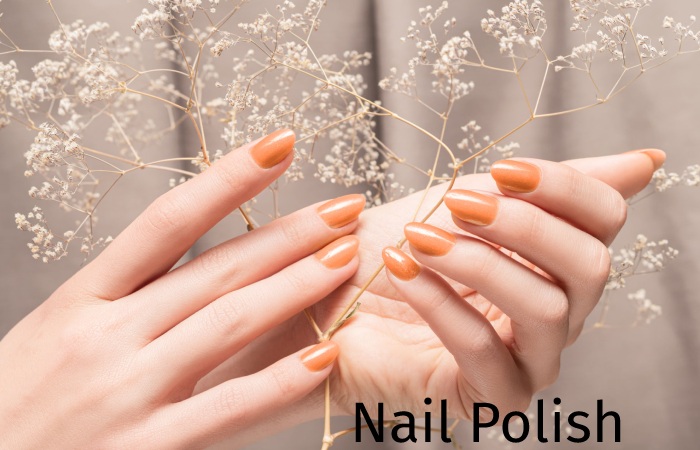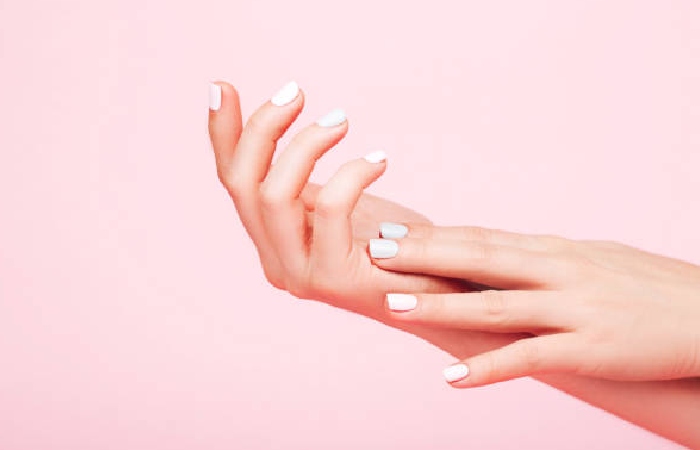Natural Nail Polish – We’re not going to go there in 4 ways, but what helps most of our nail polishes to be so perfect are the solvent-type chemicals, also used in classic paints, which give this smooth appearance and make them so easy to apply a few gestures and brush strokes. But, of course, it wasn’t always like that. Varnish has been around in China since about 3000 BC. Under the Ming dynasty, nail polish was then made with natural ingredients:
- Beeswax,
- Egg whites,
- Gelatin,
- Vegetable dyes
- Gum arabic.
Modern-day nail polish is quite different! Raise your hand if you’ve ever tried to remove semi-permanent gel polish. Only to find that you’re also removing some of the keratin from your nail. Have you ever pulled your nail polish to see that your nails now look yellow? Yes, manicuring can wreak havoc on your nails, and even more so because of the harmful chemicals that are the basis of most nail polish formulas.
Toxic Substances Found In Nail Polish
What do you need to be careful of on a “chemical” level? There is the “toxic trio” consisting of:
- Formaldehyde: used as a nail hardener and known carcinogen,
- dibutyl phthalate (DBP): a plasticizer that prevents the varnish from becoming brittle and which would be an endocrine disruptor,
- and toluene: which will help give your manicure a smooth finish but can cause headaches and dizziness.

Other Chemicals In The Mix, But Considered Less Dangerous In Small Doses, Include
- Triphenyl phosphate (TPHP) – a plasticizer that has been shown to affect hormones (after prolonged exposure),
- Formaldehyde resin – a skin allergen
- Camphor – helps keep your nails shiny, but when inhaled can make you dizzy and nauseous.
“No one is saying the occasional manicure will have long-term health consequences,” says Janet, co-founder of the Safe Cosmetics campaign, which aims to promote healthier cosmetics. “But certain groups [of people] may be more at risk. These groups include nail salon staff, anyone who works with the above products daily, and children who are more sensitive to phthalates.
It is why more and more nail salons are equipping themselves with so-called non-toxic nail polish, and it is also for this reason that it is very strongly recommended not to apply nail polish on children before or during puberty.
Governments are taking steps to help detoxify nail products. For example, the European Union has banned DBP in cosmetics, but the United States has yet to do so.
How Do You Know If Natural Nail Polish Is Toxic?
Non-toxic polishes will carry a “free” label, the most common being “3-free”. These remove the ‘toxic trio’ mentioned above, and you can also buy ‘5-free’, ‘7-free’, and ‘9-free’ polishes, and some brands have successfully removed up to 12 chemicals. Vegan nail polish is also a growing trend and was developed without animal testing or any animal-derived products in the ingredient list.
Sherrill Riley, the founder of London-based luxury store Nails & Brows, has championed non-toxic nail products since its inception four years ago. “The skin around fingers and cuticles is sensitive and absorbent, so non-toxic polishes tend to be kinder to the nails, which means less chance of drying out our nails and skin, which can irritate. And inflammation,” she says.
Conclusion
Nevertheless, with the royal blue color that I tested, I find that the outfit is less good than other brands. Honestly, I’ve only put it down 3 or 4 times since I got it, and that’s the most obvious sign that I’m not a fan of it.
